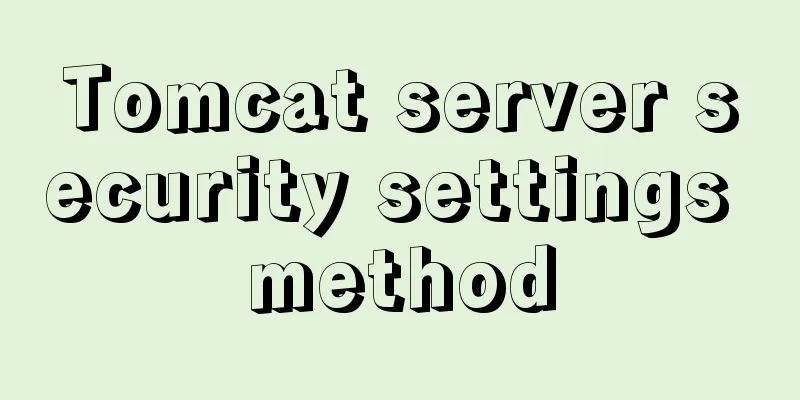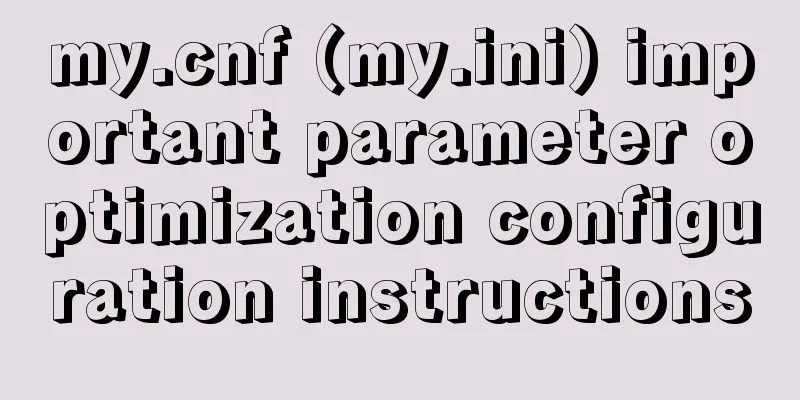Tomcat server security settings method

|
Tomcat is an HTTP server that is the official reference implementation of the widely used Servlet and JavaServer Page (JSP) technologies developed by Sun through the Java Community Process. Servlet and JSP technologies are used to build HTTP server applications. Although many features have been added to Servlet technology (including access security, Session management, and thread control). JSP technology provides an easy way to process dynamically generated HTML pages. These HTML pages are directly compiled into Servlets for fast execution time. In addition to the above two technologies to ensure security, you can also configure Tomcat parameters to increase security. Security Settings: 1. Delete all files in the webapps directory and disable the tomcat management interface
2. Comment or delete all user permissions in the tomcat-users.xml file:
3. Hide version information and modify conf/server.xml
3. User questions: nginx and httpd use the root user to start guarding port 80, and the child process/thread will switch to the normal user through the setuid() and setgid() functions. That is, the owner of the parent process is the root user, and the owner of the child process and multi-thread is a non-root user. This user does not have a shell and cannot log in to the system through ssh and the console; Create a user that can only be used to start tomcat:
Make a port mapping and call port 8080 when accessing port 80
Cancel redirect:
4. Turn off automatic deployment of war vim conf/server.xml
5. Hide the version information that appears in 404: Unzip catalina.jar in lib, jar xf catalina.jar
6. Change the shutdown tomcat command The management port that can directly shut down the Tomcat instance is defined in server.xml. After we connect to the port through telnet, we can enter SHUTDOWN (this is the default shutdown command) to shut down the Tomcat instance (note that although the instance is shut down at this time, the process still exists). Since the default closing of Tomcat's ports and instructions are very simple. The default port is 8005 and the command is SHUTDOWN. The close command needs to be modified to be a little more complicated.
Or disable port 8005
7. Separate tomcat and project users To prevent Tomcat from being implanted into the web shell program, you can modify the project file. Therefore, we need to separate Tomcat from the project owner, so that even if it is hacked, it will not be able to create and edit project files. 8. Add the following configuration in conf/web.xml
9. Custom Error Pages web.xml is under a certain application, and it should handle the 404 of this application. However, http://localhost/ accesses tomcat's own application, so the web.xml configuration should be configured in the application under webapp/Root/.
Create the error.jsp file in the webapps directory
<%@ page contentType="text/html; charset=UTF-8" %>
<%@ page import="java.io.*" %>
<%@ page import="java.util.*" %>
<html>
<header>
<title>404 page</title>
<body>
<pre>
<%
Enumeration<String> attributeNames = request.getAttributeNames();
while (attributeNames.hasMoreElements())
{
String attributeName = attributeNames.nextElement();
Object attribute = request.getAttribute(attributeName);
out.println("request.attribute['" + attributeName + "'] = " + attribute);
}
%>
</pre>
exception.jsp file
<%@ page contentType="text/html; charset=UTF-8" isErrorPage="true" %>
<%@ page import="java.io.*" %>
<html>
<header>
<title>exception page</title>
<body>
<hr/>
<pre>
<%
response.getWriter().println("Exception: " + exception);
if(exception != null)
{
response.getWriter().println("<pre>");
exception.printStackTrace(response.getWriter());
response.getWriter().println("</pre>");
}
Responses
e.getWriter().println("<hr/>");
%>
Test the custom error page in the browser:
Define session timeout and prohibit directory listing
Well, that’s all for this article. I hope it can help you. You may also be interested in:
|
<<: Explanation of CAST and CONVERT functions for type conversion in MySQL database
>>: How to use ECharts in WeChat Mini Programs using uniapp
Recommend
How to perfectly implement the grid layout with intervals on the page
Typical layout examples As shown in the above pic...
Some pitfalls of JavaScript deep copy
Preface When I went to an interview at a company ...
How to install PostgreSQL and PostGIS using yum on CentOS7
1. Update the yum source The PostgreSQL version o...
Detailed tutorial on installing JDK8 on Linux system (CentOS7 installation)
JDK Installation I won't go into too much det...
Detailed explanation of mysql record time-consuming sql example
mysql records time-consuming sql MySQL can record...
Detailed explanation of data types and schema optimization in MySQL
I'm currently learning about MySQL optimizati...
Detailed explanation of the solution to the problem of Ubuntu system interface being too small in vmware14Pro
1. Operating Environment vmware14pro Ubuntu 16.04...
Why is IE6 used by the most people?
First and foremost, I am a web designer. To be mor...
jQuery plugin to implement search history
A jQuery plugin every day - to make search histor...
How to distribute two buttons on the left and right sides of the same parent tag using CSS
This article mainly introduces the method of CSS ...
Analysis and explanation of the differences between DIV, Table and XHTML website building
To put it simply, website construction is about &q...
Vue implements div wheel zooming in and out
Implement div wheel zooming in and out in Vue pro...
How to deploy ElasticSearch in Docker
1. What is ElasticSearch? Elasticsearch is also d...
Detailed explanation of ECharts mouse event processing method
An event is an action performed by the user or th...
How to install and configure WSL on Windows
What is WSL Quoting a passage from Baidu Encyclop...
























